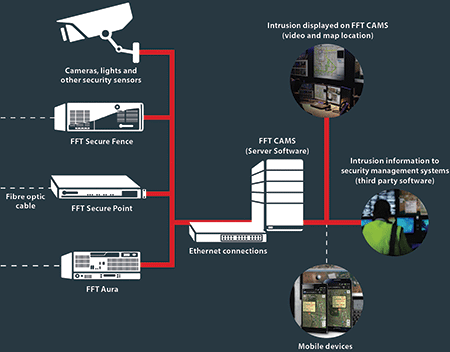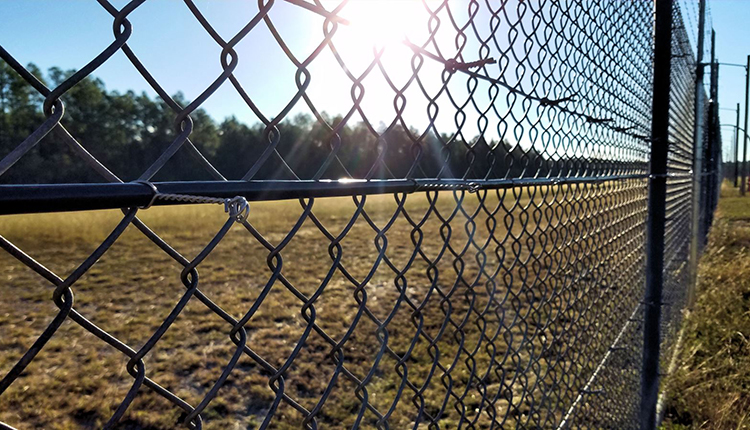Secure Your Building With Trusted Fiber Optic Security Solutions
In a period where security risks are increasingly advanced, the need for efficient defense options is extremely important. Fiber optic protection systems stand out by offering exceptional integrity and efficiency, leveraging sophisticated light transmission innovation to boost surveillance abilities. These systems not just supply immunity to electro-magnetic interference but likewise assure lasting price performance via minimized maintenance needs. The choice to invest in such a solution includes careful consideration of numerous variables. Recognizing the details of fiber optic protection can brighten the path to protecting your residential or commercial property better. What aspects should be explored to optimize your financial investment?
Benefits of Fiber Optic Protection
Fiber optic safety and security options provide a variety of advantages that make them increasingly necessary in today's digital landscape. Among the most significant benefits is their superior data transfer ability, which permits the transmission of large quantities of data over long distances without substantial signal destruction. This capacity is specifically beneficial for safety and security systems that count on high-definition video surveillance and real-time surveillance.
Additionally, fiber optic cords are naturally a lot more secure than conventional copper wiring. They are unsusceptible to electro-magnetic disturbance, making them much less at risk to hacking or eavesdropping. This improved safety and security is critical for safeguarding delicate data and keeping the integrity of security systems.
Furthermore, fiber optics are a lot more sturdy and resistant to environmental aspects, such as wetness and temperature level changes, ensuring long-lasting reliability and reduced upkeep prices. The light-weight nature of fiber optic wires likewise streamlines installation processes, enabling for better versatility in system design.
Exactly How Fiber Optic Systems Work
In modern-day safety applications, the procedure of fiber optic systems depends on the concepts of light transmission with versatile glass or plastic fibers. These fibers are developed to bring light signals over lengthy ranges with marginal loss, making them perfect for sending information connected to protection surveillance. The core of the fiber, bordered by a cladding product, makes sure that light signals continue to be contained within the core with a sensation understood as complete internal reflection.
When incorporated right into protection systems, fiber optic cords can transfer data from different sensors, such as cams, activity detectors, and alarms, to a main surveillance terminal. The high bandwidth capacity of fiber optics permits for the transmission of huge amounts of data at the same time, making it possible for real-time security and timely feedback to prospective dangers.

Kinds Of Fiber Optic Protection Solutions
Numerous kinds of fiber optic safety and security options have emerged to enhance surveillance and security throughout various atmospheres. One famous service is fiber optic border breach discovery systems (PIDS), created to check and safeguard property borders through the discovery of vibrations and disturbances along fiber optic cable televisions. These systems give real-time alerts, making it possible for timely feedbacks to unauthorized access attempts.
One more efficient remedy is fiber optic video security. This modern technology leverages high-def cams connected by means of fiber optic wires to transfer video data over cross countries without considerable loss of high quality. This configuration is specifically helpful in expansive locations, such as airport terminals and commercial sites, where typical copper cable televisions may falter.
Additionally, fiber optic sensors are progressively used for ecological monitoring, identifying adjustments in temperature level, stress, or acoustic signals that might indicate safety violations or hazardous problems. These sensing units use high sensitivity and precision, making them optimal for essential facilities protection.

Installation and Upkeep Tips
Reliable setup and maintenance of fiber optic security solutions are vital for guaranteeing their optimum performance and durability. Fiber optic cords need to be transmitted firmly, preventing sharp bends or spins that can jeopardize their integrity.
During setup, it is suggested to conduct comprehensive testing of the system to validate that all elements are functioning appropriately. Routine upkeep checks should be set up to check the fiber optic cable televisions for any kind of see here indicators of wear or damage, as well as to ensure that connections remain protected. Cleaning the ports periodically is also vital to avoid signal loss due More about the author to dirt or debris.
In addition, maintaining an updated inventory of set up components and their requirements can help with simpler troubleshooting and upgrades. By adhering to these installment and maintenance tips, homeowner can make the most of the effectiveness of their fiber optic safety and security services, guaranteeing a dependable defense against possible threats.
Comparing Prices and Effectiveness
When assessing fiber optic protection remedies, recognizing the balance in between costs and effectiveness comes to be extremely important (security fibers). Organizations has to think about the in advance financial investment, recurring upkeep expenses, and the long-lasting worth these systems provide. While fiber optic systems might call for a greater first installation expense compared to traditional copper wiring, their toughness and reduced susceptibility to electro-magnetic disturbance commonly convert to lower maintenance expenses over time
Effectiveness is one more crucial element; fiber optic safety systems provide enhanced information transmission rates and boosted dependability. They can cover bigger distances without signal degradation, making them ideal for expansive homes or remote places. Moreover, the high data transfer capacity sustains advanced safety applications, such as high-def video clip security and real-time tracking, which are crucial for extensive protection monitoring.
Ultimately, the choice in between expense and efficiency should be assisted by particular security requirements and run the risk of evaluations. Organizations needs to assess their special needs, taking into consideration variables like home dimension, safety threats, and technological advancements. By performing a comprehensive cost-benefit evaluation, stakeholders can make educated decisions that line up with useful content their protection goals while guaranteeing an audio financial investment in fiber optic modern technology.
Conclusion
Finally, fiber optic protection services provide considerable benefits in terms of performance, integrity, and resistance to environmental disturbances. These systems enhance monitoring capacities and boundary safety and security, making them an effective choice for extensive security. Although preliminary setup costs may be greater, the long-term advantages, including decreased maintenance and superior functionality, warrant the financial investment. Inevitably, the adoption of fiber optic innovation represents a forward-thinking method to safeguarding buildings versus developing security threats.